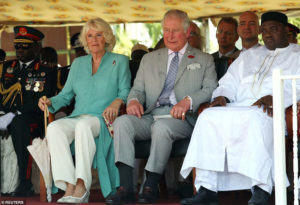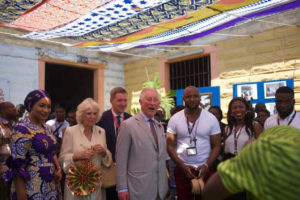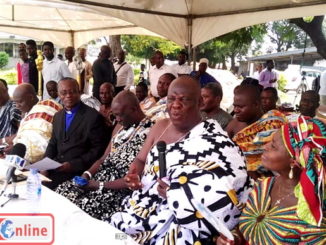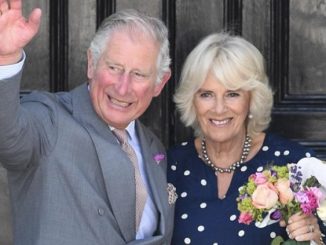The visiting Prince of Wales, last Saturday, toured the former slave dungeon, the Osu Castle, formerly called Christiansborg Castle as the Danes christened it when they owned it.
It is one castle which changed ownership several times among European maritime powers during its early history. During his visit, the Prince was accompanied by Nana Oforiatta Ayim and the MP for Osu Klottey, Dr. Ezenator Agyeman Rawlings.
The Osu Christiansborg Castle played a major role in the trans-Atlantic slave trade serving as a holding house for the estimated 1.5 million slaves taken away from our part of the world to the new world.
Plans are on to make good President Akufo-Addo’s announcement in February 2017 to convert it to a Leadership Museum for the exhibition of Ghana’s heads of state.
Built in the 17th Century, it rests silently today on the banks of the Atlantic Ocean; silence which muffles its role in the trans-Atlantic slave trade.
This inhuman trade, whose abolition engaged the efforts of abolitionists like Granville Sharp and many others, shaped the history of the US, Britain and the Caribbean.
There was no doubt that as the Prince relished the sights, he could not but appreciate the grand role of history in matters of humanity.
According to the Gold Coast Handbook, 1928, edited by John Maxwell, Chief Commissioner, Ashanti, ‘in about 1623, a lodge, named Ursu Lodge, was built by the Portuguese at Christiansborg, and this was occupied by the Swedes in 1645. The Swedes were driven out by the Danes in 1657, who made many alterations and in the course of time built most of what is now the Castle and Government House.’
The ownership, as noted in a previous paragraph, changed hands when the Portuguese regained the place in 1679, buying it from an officer in the employ of the Danes. This officer had, according to records, revolted and killed the Danish Governor. The new owners were forced to sell the property to the Danes ‘who redeemed it the following year.’
The Castle suffered a major force majeure when an earthquake struck in 1862 damaging it massively. A repair work followed subsequently with a wooden bungalow constructed upstairs.
The story about Castles represents the trading activities of European nations, if you like the maritime powers of the times.
The Prince and his wife, the Duchess of Cornwall, watched an exhibition held in their honour on the same day at Jamestown, another location whose name is a reminder about colonial rule.
They were accompanied by the Second Lady, Hajia Samira Bawumia.
–
Daily Guide






